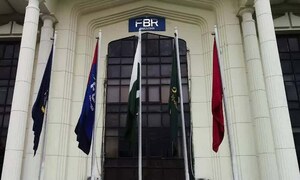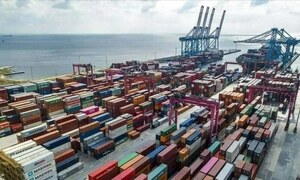World Bank is negotiating with Pakistan government for launching a new project 'Pakistan Solar and Renewable Energy Programme'(PSREP) and International Bank for Reconstruction and Development is considering for providing US$ 200 million, while Green Climate Fund will provide US$ 100 million for this project. The Project Development Objective is to increase the installed generation capacity of renewable energy (RE) and enhance RE development in Pakistan.
According to an update project report of World Bank, Pakistan's installed capacity is currently about 25,000 MW but available supply is significantly lower. There is a chronic electricity shortage with peak demand-supply gap of over 5,500MW. Demand is increasing rapidly at about 5 percent per annum and is expected to reach about 28GW in 2020, WB report disclosed.
Furthermore, current electricity demand is suppressed; the per capita annual electricity consumption has in fact declined from 489kWh/capita in 2006 to 450kWh/capita in 2013, which is a fifth of the South and East Asian regional average of 2,226kWh/capita.
WB report mentioned that Pakistan's power sector is unbundled, and has significant private participation in generation. In the early 1990s Pakistan was one of the first countries to initiate a comprehensive program of energy sector reform. The vision was to unbundle the Power Wing of the Water and Power Development Authority (WAPDA) into commercially oriented companies. Separate corporate entities were created from WAPDA with responsibilities for: thermal generation through four generation companies (Gencos); hydropower through WAPDA Hydel; transmission through the National Transmission and Despatch Company (NTDC); and distribution through eight electricity distribution companies (Discos) (now ten). Privately-financed generation by independent power producers (IPPs) was introduced in parallel, with some success - about one half of all electricity generated today is from IPPs. The Karachi Electricity Supply Company (KESC, now K-Electric) remained an integrated utility which was privatized in 2005. An independent economic regulator, the National Electric Power Regulatory Authority (NEPRA), was established by law.
Energy sector performance has improved in recent years, but challenges remain. Subsidies to the energy sector were reduced in FY14/15 to about 0.8 percent of GDP, down from 1.5 percent in FY12/13. Falling oil prices have reduced input costs for electricity generation, enabling tariffs to be adjusted downwards. Nonetheless, a gap between costs and revenues including subsidies remains, and the sector continues to suffer liquidity shortages. As a result, accumulated arrears of payment by the public electricity distribution companies (Discos) to their suppliers, commonly known as the circular debt, reached an estimated PKR 314 billion, at the end of FY14/15 or a little over one percent of that year's GDP. Targeting of subsidies towards the poorest remains an issue, as does the need to ensure that the sector develops in a socially and environmentally sustainable way, WB reported added.
WB report stated that Sector Performance can further improve by reducing losses, raising collections, lowering the cost of supply, and further investment. Distractions on the political and security front have slowed the pace of reform in the latter part of 2014, but momentum has picked up. The government has focused on better management of existing assets and resources throughout the fuel supply-generation-transmission-distribution chain. Government figures suggest that system-wide losses for 2015 at 17.9 percent, was at its lowest over the last 10 years; recovery of amounts billed was at its highest over the same period, at 94.6 percent.
WB report mentioned that Pakistan has only recently opted for significant investments in new coal fired power generation. For several decades, most of the country's thermal power stations were based on indigenous natural gas, with a number of significant oil-fired, or dual fuel (oil and gas), additions in the last fifteen years. The current installed capacity is about: 35 percent oil; 30 percent gas; 30 percent hydro; and all others, including nuclear, cumulatively at about 5 percent.
With dwindling domestic fossil fuel (mainly gas) reserves and limited development of hydro resources, the energy sector is increasingly dependent on imported fuels. In order to access cheaper power, Pakistan has initiated a substantial construction program of new coal power plants, funded primarily through bilateral agreements with China.
If government plans to invest in about 12,000 MW of coal fired generation, and 7,200 MW of gas fired power plants by 2025 are to materialize, dependence on imported fossil fuels will increase exponentially. Of the planned coal power plants about 7,500 MW have either started construction or have reached financial closure. International experience shows that coal fired generation requires long lead times, is prone to delays, can suffer from local resistance, and post- completion, must deal with difficult fuel transport issues, and adverse environmental impacts, WB report added.
WB report pointed out that Renewable energy generation in Pakistan falls far short of realizing its potential, despite the country's considerable resources. Given the growing electricity demand, depleting domestic gas reserves, and increasing dependency on fossil imports, renewable energy generation can help in (i) displacing fuel imports, (ii) reducing electricity price volatility, and (iii) meeting the country's climate change mitigation targets through reductions in projected Greenhouse Gases (GHG) emissions.
The World Bank's Renewable Energy Resource Mapping initiative, shows considerable solar and wind power resources across Pakistan. Nevertheless, the development of new solar plants in particular, is on hold for the following reasons:
i. The high off-take price (about 14 US cents/kWh) of the Quaid-e-Azam Solar Park Limited (QASPL, 100MW +300MW). That price was based on the prevailing feed-in tariff in 2015, but it now compares poorly with much lower tariffs seen internationally (3-6 US cents/kWh in 2015-16 time frame); ii. The unprecedented trajectory of lower global solar bid prices makes decision makers uncomfortable in proceeding with signed Letters of Intent (LoI), even at lower upfront tariff of around 9.5-10 US cents/kWh; some 2000 MW of such LoIs are on hold in Punjab province alone;
iii. The variable nature of solar and wind power output, and concerns over their integration into the grid has led to arbitrary caps on renewables, without detailed analysis of transmission and distribution (T&D), and other constraints. This is exacerbated by limited exposure to the technologies and inadequate technical capacity at various institutions;
iv. Low inflation and crude oil prices have somewhat eased budgetary pressures, reducing the sense of urgency to diversify away from oil and gas based generation;
v. The non-price related benefits of solar (and wind) generation have not been appropriately understood as part of the planning process (quick execution, modularity, decentralized implementation, long-term price stability);
vi. In the case of distributed grid-connected, and off-grid generation, inadequate policy incentives and insufficient demonstration of the technology have been key reasons for slow market penetration.
Electricity from solar PV has delivered prices below 10 UScents/kWh globally, with a declining future trajectory expected. Outside Pakistan, typical prices obtained through auctions for expected commissioning in 2017 range between 6-8 UScents/kWh, while solar upfront tariff in the country continues to lag this trend. The project proposes to demonstrate lower prices within Pakistan (installed cost of less than 1US$/W). The project will also help scale-up renewable energy by combining a series of investments in solar PV sub-projects and related infrastructure, with technical assistance, and knowledge exchanges. This "learning-by-doing" approach will accelerate institutional capacity building, promote operational experience within the country, and enhance the confidence in renewable energy among policy-makers, regulators, grid dispatchers, local financiers and the general public. This in turn, will spur further scale-up, and more competitively priced private sector investments in PV.
In addition, this project also intends to remove a key barrier to scaling up renewable by the building technical capacity required to integrate variable renewable energy (VRE) into the grid. Capacity building activities will be designed to enhance understanding of renewable energy pricing, global best practices in terms of policies and operations, and knowledge sharing among the relevant entities within Pakistan to improve coordination, and expedite investments in renewable energy across the country. This project will also seek to address concerns around transmission constraints by working with government agencies on location and decentralization issues that are key to scaling-up of renewable, and particularly solar projects.
Finally, within the framework of new investments in coal plants, and scepticism over renewable energy projects, Bank intervention will help steer Pakistan towards a lower carbon path to development, as indicated in its Nationally Determined Contribution to the global climate change agenda.
BR100
11,839
Decreased By
-27.2 (-0.23%)
BR30
35,827
Increased By
129.6 (0.36%)
KSE100
113,657
Decreased By
-491.7 (-0.43%)
KSE30
35,775
Decreased By
-177 (-0.49%)

























Comments
Comments are closed.